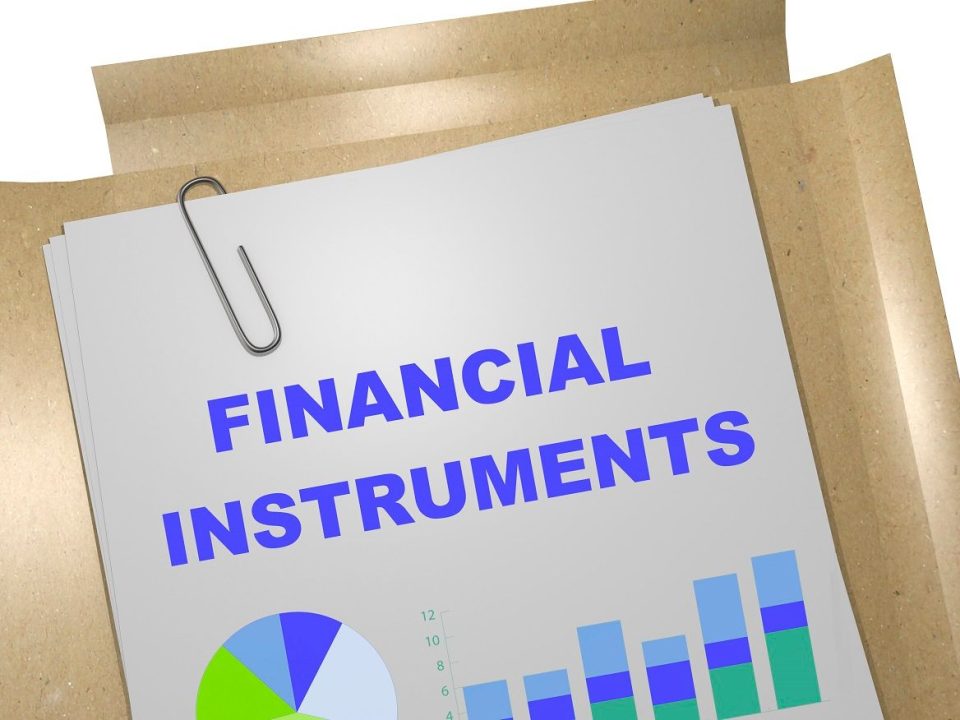Trade Finance

What Is Bank Guarantee
October 30, 2024
Standby Letter of Credit
December 5, 2024Trade Finance
What Is Trade Finance?
Trade finance is a crucial aspect of international trade, enabling businesses to manage the risks associated with importing and exporting goods. Understanding the trade finance process can help you streamline transactions, improve cash flow, and expand your business reach. By leveraging trade finance solutions, you can mitigate risks related to payment delays and the creditworthiness of international partners.
When you engage in trade finance, various financial instruments help facilitate transactions, ensuring that both buyers and sellers meet their obligations. This process not only enhances your working capital but also builds trust with trading partners, ultimately fostering smoother operations.
As you explore trade finance, you’ll discover the tangible benefits it offers, including reduced risks and enhanced competitiveness in the global market. With the right strategies, your business can thrive despite the complexities of international trade.
Trade Finance: Key Takeaways
- Trade finance mitigates risks in international transactions.
- Financial instruments enhance cash flow and trust between partners.
- Understanding the process opens opportunities for business growth.
Overview of Trade Finance
Trade finance provides essential support to businesses engaged in international trade by facilitating transactions and managing risks. It encompasses various instruments and services that can help ensure the smooth movement of goods across borders.
What Is Trade Finance
Trade finance refers to the financial products and services that support international trade transactions. Its primary purpose is to mitigate risks associated with importing and exporting goods, including payment delays, currency fluctuations, and delivery uncertainties. By providing businesses with access to working capital, trade finance enables them to purchase goods without immediate payment.
Financial institutions typically involve themselves as intermediaries, offering solutions that secure payment and provide trade credit. This system not only promotes global commerce but also fosters trust between trading partners by ensuring that payments are made on time and goods are delivered as agreed.
Key Players in Trade Finance
The trade finance ecosystem includes various stakeholders, each playing a vital role in the process. Key players consist of:
- Exporters and Importers: Companies engaged in the sale and purchase of goods.
- Banks and Financial Institutions: They provide financing, logistics, and risk management services, facilitating smooth transactions.
- Insurers: They offer insurance products to cover risks such as non-payment and shipment loss.
- Freight Forwarders and Logistics Companies: They manage the shipment and transportation of goods, ensuring timely delivery.
Each player contributes specialized knowledge and resources to make cross-border trade more efficient and secure, helping businesses prosper in the global marketplace.
Types of Trade Finance Instruments
Various instruments exist within trade finance, each designed to meet specific transactional needs:
- Letters of Credit (LC): These are guarantees from a bank that a buyer’s payment to a seller will be received on time and for the correct amount. They protect both buyers and sellers in a transaction.
- Trade Credit: A financing option where suppliers allow buyers to purchase goods and defer payment for a specified period.
- Documentary Collections: A process where a bank acts as an intermediary to collect payment on behalf of the exporter. It involves presenting shipping documents to the buyer’s bank to secure payment.
- Factoring: This involves selling accounts receivable to a third party (factor) at a discount for immediate cash.
Each instrument serves distinct purposes, providing flexibility and minimizing risks associated with international transactions.
How Trade Finance Works
Trade finance involves various instruments and processes that facilitate international trade. Understanding these elements is crucial for smooth transactions and risk management.
Trade Finance Instruments
Trade finance utilizes several key instruments to support the buying and selling of goods. Some of the most common instruments include:
- Letters of Credit (LCs): A bank guarantees payment to the seller upon fulfilment of specified terms. This instrument mitigates the risk of buyer default.
- Bank Guarantees: These assure the seller that the bank will cover the buyer’s obligations if needed. They protect the seller in case the buyer fails to pay.
- Trade Credit Insurance: This insures a seller against the risk of non-payment by buyers. It can improve cash flow by allowing for longer payment terms.
- Factoring: This allows businesses to sell their receivables at a discount to obtain immediate cash. It helps improve liquidity without taking on additional debt.
Each instrument serves a specific purpose while reducing the risks involved in trade transactions.
Read Also: Bank Financial Instruments
Steps in a Trade Transaction
The trade transaction process involves several steps to ensure that both the buyer and seller fulfil their obligations. The steps often include:
- Negotiation: Parties discuss and agree on terms, including price and payment methods.
- Issuance of Documents: Once terms are finalized, the seller prepares and sends shipping and commercial documents.
- Letter of Credit Setup: If using an LC, the buyer’s bank is involved in confirming payment terms and conditions.
- Shipping and Delivery: Goods are shipped according to the agreed schedule, and relevant documents are exchanged.
- Payment Settlement: Once the goods are received and all conditions met, payment is made to the seller through the previously established financial instrument.
These steps ensure that the interests of both parties are protected while facilitating a successful transaction.
The Trade Finance Process
The trade finance process involves multiple steps that facilitate international trade by ensuring that both buyers and sellers have the necessary financial support. Each method within this process addresses specific needs and risks associated with international transactions.
Pre-shipment Financing
Pre-shipment financing provides exporters with funds to procure, produce, and prepare goods before shipment. This can be crucial for companies that need to cover production costs or purchase raw materials.
Financial institutions usually offer this type of financing in the form of loans or advances. By securing funds before delivery, exporters can fulfil orders and maintain cash flow.
The financing terms typically depend on the exporter’s creditworthiness and the buyer’s reputation. Short-term loans are common, with repayment occurring upon shipment or delivery.
Documentary Collections
Documentary collections involve the use of a third party, usually a bank, to manage payment between the buyer and seller. In this process, the seller presents shipping documents to their bank, which forwards them to the buyer’s bank.
The buyer’s bank then releases these documents when payment is made. This system provides security for both parties since the seller retains control over the goods until payment is secured.
It is important to note that documentary collections do not guarantee payment, unlike letters of credit. This method is often used when parties have established trust and familiarity.
Advance Payment Standby
Advance payment standby allows a seller to receive payment before goods are shipped. This method is often preferred for new business relationships or high-risk transactions.
By requiring advance payment, you reduce the risk of non-payment. However, this places more risk on the buyer, as they must pay for goods before receipt.
To mitigate concerns, sellers may provide guarantees or warranties. Trust and clear communication play crucial roles in this arrangement’s success.
Read Also: Bank Guarantee: All You Need To Know
Letters of Credit
Letters of credit are instruments issued by banks that guarantee payment on behalf of the buyer. This method assures the seller that they will receive payment as long as they meet the specified conditions.
Letters of credit can be revocable or irrevocable, with irrevocable letters offering more security to sellers. Conditions often include documentation, shipment dates, and product specifications.
This method minimizes risk for sellers and encourages international trade by providing a reliable payment mechanism. By utilizing letters of credit, both parties can proceed with greater confidence.
Benefits of Trade Finance
Trade finance offers various advantages that can enhance your business operations. It helps manage risks, boosts cash flow, and facilitates smoother international transactions, making it a strategic tool for decision-makers.
Mitigating Risk
One significant benefit of trade finance is its ability to mitigate risks associated with global trading. You face various uncertainties, including currency fluctuations, political instability, and economic shifts. Trade finance instruments, like letters of credit, provide a level of security by ensuring that payment is made only upon fulfilment of the agreed-upon terms. This protection reduces the chances of financial loss due to non-performance by buyers or sellers.
Additionally, using trade finance can enhance your credibility with suppliers and buyers, fostering stronger relationships. With financial backing, you can negotiate better terms, creating a more balanced and secure trade environment.
Improving Cash Flow and Liquidity
Trade finance improves your cash flow by providing immediate access to funds. Traditional payment methods often delay cash availability, but financing options like invoice discounting let you unlock cash tied up in receivables. This can be crucial for covering operational costs and fulfilling orders.
Moreover, having access to trade credit allows you to manage your inventory more effectively. You can purchase goods in larger quantities when it’s most cost-effective and pay suppliers later, optimizing your cash flow cycle. This flexibility enhances your liquidity, allowing you to invest in growth opportunities or manage unforeseen expenses without financial strain.
Facilitating International Trade
Engaging in international trade can be complex, but trade finance simplifies the process. With various financing options available, you can navigate multiple currencies and regulations seamlessly. Financing solutions like export loans enable you to export goods more confidently by ensuring funds are available to you promptly.
Additionally, trade finance providers often have a wealth of knowledge regarding local markets, helping you understand risks and opportunities. By utilizing their expertise, you can make better-informed decisions and streamline your international operations. This support enhances your ability to compete globally, expanding your business’s reach and potential profitability.
Challenges and Considerations
In trade finance, you face several challenges and considerations that can impact your operations. Understanding these issues is essential for effective risk management and decision-making.
Regulatory Compliance
Regulatory compliance is a critical challenge in trade finance. You must navigate a complex landscape of local and international laws that govern transactions. This includes anti-money laundering (AML) regulations and know-your-customer (KYC) requirements.
Non-compliance can lead to significant penalties and legal repercussions. Staying updated on regulatory changes and ensuring adherence to all applicable laws is essential. Many companies invest in compliance programs and technologies to address these challenges, mitigating risks associated with regulatory oversight.
Credit Risk Assessment
Credit risk assessment is vital to the trade finance process. You need to analyze the creditworthiness of trading partners to avoid potential defaults. This evaluation often includes assessing financial statements, credit scores, and payment histories.
The unpredictable nature of global markets can complicate credit assessments further. Factors like political instability, economic downturns, or changes in trade policies can affect the financial health of your partners. Implementing robust credit evaluation frameworks can help minimize risks and protect your investments.
Costs and Fees
Costs and fees in trade finance can add up, impacting your overall profitability. You may encounter various charges, including interest rates, transaction fees, and accounting costs. Understanding these fees is crucial for budgeting and financial planning.
Negotiating favourable terms with financial institutions can help manage these costs. Additionally, leveraging technology and digital platforms can streamline processes, potentially reducing transaction costs. Be sure to conduct a thorough analysis of all fees involved to make informed decisions moving forward.
Read Also : Standby Letters of Credit
The Future of Trade Finance
The landscape of trade finance is evolving, driven by technology and shifts in the global market. Understanding these changes can help you navigate upcoming opportunities and challenges effectively.
Technological Advancements
Technological innovations are set to transform trade finance significantly. Tools such as blockchain and artificial intelligence improve transparency and efficiency. Blockchain enables real-time access to transaction data, reducing fraud and streamlining processes.
Artificial intelligence can analyze vast amounts of data quickly, ensuring better decision-making and risk assessment. Automation through smart contracts simplifies the enforcement of terms, minimizing delays in payment and delivery.
In addition, digital platforms are emerging, allowing businesses to connect with multiple financing options. These advancements promote greater financial inclusion, making trade finance accessible to small and medium-sized enterprises.
Emerging Markets Impact
Emerging markets are becoming increasingly prominent in global trade finance. Areas such as Southeast Asia and Africa show rapid economic growth, attracting interest from investors. These regions often require innovative financing solutions to support their expanding trade activities.
In response, financial institutions are developing tailored products and services that cater to local needs. This includes microfinancing and alternative credit assessments, which help mitigate risks associated with traditional lending methods.
Additionally, as these markets mature, regulatory frameworks are being implemented to promote fair practices. This fosters a more stable environment for international trade, encouraging further investments and ultimately boosting global trade volumes.
Frequently Asked Questions
In this section, you will find concise answers to common queries regarding trade finance. These frequently asked questions cover the products, processes, advantages, and roles of banks in trade finance.
What are the typical products and instruments used in trade finance?
Common products in trade finance include letters of credit, guarantees, trade loans, and invoice financing. Letters of credit provide security to exporters by guaranteeing payment, while guarantees protect parties against risks. Trade loans offer financing for working capital, and invoice financing improves cash flow.
Can you explain the trade finance process flow and its components?
The trade finance process generally begins with a buyer and seller agreeing on terms. Once agreed, you can utilize instruments such as letters of credit to facilitate payment. Key components include document verification, risk assessment, and fund transfer, all ensuring that transactions are secure and efficient.
What advantages does trade finance bring to international trade?
Trade finance enhances cash flow, mitigates risks, and improves transaction efficiency. It enables you to expand your market reach by providing the necessary liquidity for fulfilling large orders. Additionally, it helps in managing payment risks associated with international transactions.
How do banks facilitate trade finance, and what roles do they play?
Banks assess risk and provide various products to support trade transactions. They act as intermediaries, offering letters of credit and guarantees that secure payment. Banks also assist in document verification and fund transfers, ensuring compliance with international trade regulations.
What are the common types of trade finance available to businesses?
Businesses can access various types of trade finance, including export and import financing, documentary credits, and forfeiting. Export financing supports sellers in receiving payment before goods are shipped. Import financing allows buyers to obtain goods while deferring payment through various instruments.
Why is trade finance considered an important aspect for working in global markets?
Trade finance is crucial for mitigating risks when entering international markets. It provides a safety net that enables you to conduct transactions confidently, knowing your interests are protected. Additionally, access to trade finance can significantly enhance your competitiveness in the global landscape.





5 Comments
[…] Read Also: Trade Finance All You Need To Know […]
[…] Use in Trade Finance: BPUs are frequently used in international trade transactions to facilitate secure and transparent […]
[…] Finance (HK) Limited, a leading trade finance specialist and international project financier, has successfully arranged €284 million in […]
[…] Read Also: Trade Finance: All You Need To Know […]
[…] the world of trade finance, businesses often rely on bank guarantees (BGs) and standby letters of credit (SBLCs) to secure […]